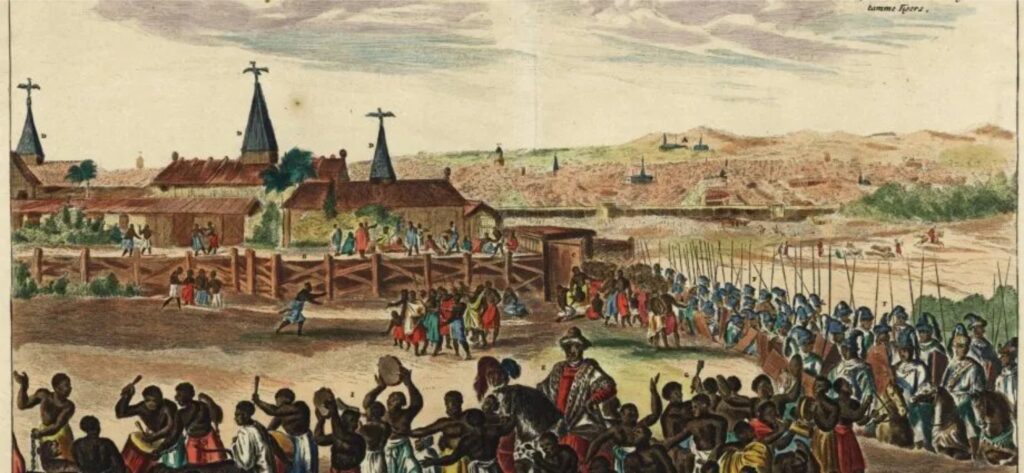Let’s address the first thing that comes to mind when you hear “Egungun is coming.” You either run, freeze, or try to disappear into the crowd. But behind the thunderous drumming, swirling fabrics, and the occasional (yes, real) flogging is a deeply rooted spiritual practice. The Egungun masquerade is not just performance, it is ancestral presence, social conscience, and a living reminder that the past is still watching.
What Is Egungun?
In Yoruba belief, Egungun refers to the collective spirits of ancestors who are honored and remembered through elaborate masquerade rituals. The word itself means “ancestor” or “bone.” These ancestors are invited back into the physical realm to visit the living, dispense blessings, and restore balance.
Each Egungun costume is custom-made, often draped in multiple layers of richly embroidered cloth. The costume conceals the identity of the masquerader completely, transforming them into a vessel through which the ancestor speaks. This is not symbolic. For the community, the Egungun is the ancestor.
The Flogging Is Not Random
The lashings people associate with Egungun processions are not acts of aggression. They are spiritual corrections. In traditional belief, the whip clears negative energy, wards off misbehavior, and enforces ancestral discipline. If someone disrupts the procession, mocks the masquerade, or behaves arrogantly in its presence, a quick stroke might come flying their way.
It is not personal. It is a warning from the beyond. The masquerade’s whip does what elders might hesitate to say aloud. It restores order where modern authority often turns a blind eye.
Rhythm, Fabric, and Ancestral Language
Everything about the Egungun ritual carries meaning.
The movement is coded and purposeful. Some Egungun spin and leap in bursts of energy. Others move slowly, with a weight that signifies a deeply revered ancestor.
The costume speaks. Layers of fabric symbolize layers of time and existence. Amulets and charms sewn into the cloth offer protection and enhance spiritual power.
The music drives the performance. Drums do not just accompany the dance. They call the ancestor, guide their steps, and communicate messages. Yoruba talking drums can mimic speech, relaying oríkì (praise poetry) tied to specific lineages.
Each Egungun has its own history, its own role, and its own message. What might look like a chaotic parade is actually a structured spiritual event passed down through centuries.
Egungun Beyond Nigeria
Egungun is not limited to Yorubaland. In places like Cuba, Brazil, and Trinidad, where Yoruba descendants preserved their traditions through religions like Santería and Candomblé, Egungun appears in temple rituals and festivals. There, ancestral worship blends with Catholic saints, but the central idea remains—honor the ancestors, and they will protect and guide the living.
What Are the Odds You’ll Get Flogged?
Very low, if you behave. The masquerade has rules. Show respect. Do not mock or obstruct. Do not take selfies too close or try to snatch a piece of cloth. In some towns, the flogging is even restricted to symbolic motions or choreographed warnings. But if you step out of line in the wrong place at the wrong time, you just might catch a spiritual memo across your back.
Why It Still Matters
The Egungun ritual is not about fear. It is about memory. It is about accountability. It is about identity. In a world that constantly pressures African societies to forget their traditions, the Egungun reminds people that their ancestors still walk among them. They still have something to say. And they are still watching.
—
References
Egungun Masquerade (Yoruba culture) – Nigeria – UNESCO Intangible Heritage List
National Commission for Museums and Monuments: Egungun Masquerade
Lawal, Babatunde. “The Living Dead: Art and Immortality among the Yoruba of Nigeria.” Africa: Journal of the International African Institute, Vol. 47, No. 1, 1977.
National Geographic: Inside Nigeria’s Egungun Festival
Drewal, Henry J. Gelede: Art and Female Power among the Yoruba. Indiana University Press, 1983.


